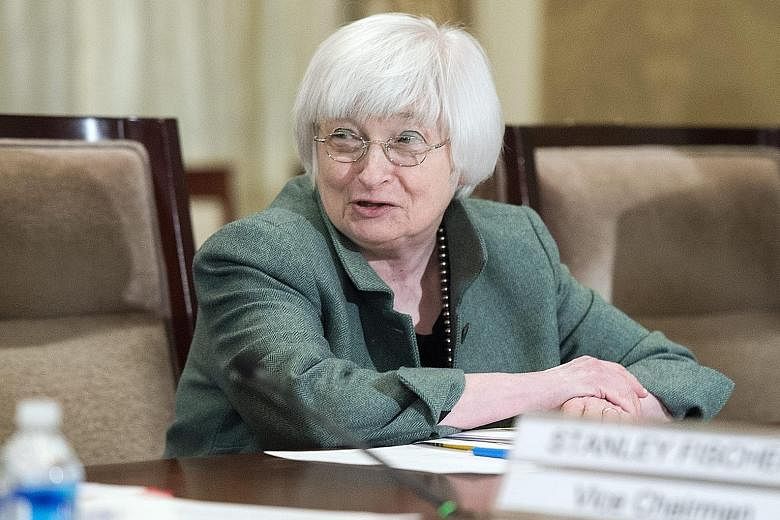WASHINGTON • Wall Street giants such as JPMorgan Chase, Goldman Sachs and Citigroup would face new limits on credit exposure to other large financial firms under a Federal Reserve plan aimed at ensuring banks will not take others with them if they fail.
The proposal, which would limit such exposures to 15 per cent of a lender's Tier 1 capital, represents a second effort after the Fed abandoned a 2011 proposal for a 10 per cent cap. Even so, the US central bank estimates the largest institutions would have to dial back their exposures by almost US$100 billion (S$137 billion) to get below the 15 per cent mark.
"The credit limit sets a bright line on total credit exposures between one large bank holding company and another large bank or major counterparty," Fed chairman Janet Yellen said before the proposal was approved last Friday.
The measure targets the problem of big-bank connectedness that magnified the 2008 financial crisis, she said.
The earlier version was shelved after the Fed received strong criticism from the banking industry, and the revision more closely matches an international agreement on a 15 per cent cap for the biggest institutions.
The strictest limits affect only the US banks deemed systemically important and foreign banks with over US$500 billion in assets in the country. Two lower tiers would face lesser limits, with lenders between US$50 billion and US$250 billion facing the 25 per cent cap under the 2010 Dodd-Frank Act.
Congress called for the safeguards in the landmark regulatory law after financial firms that fell during the 2008 credit crisis threatened to pull their trading partners towards collapse. In the most infamous instance, Wall Street banks with exposure to Lehman Brothers got taxpayer-funded aid to help them weather its demise.
In the years since the Fed's initial proposal, other rules and supervision efforts have been introduced to limit concentration of risk, including such demands as stress-testing and the drafting of living wills meant to show how big banks can fail without taking the wider financial system down. And the Basel Committee on Banking Supervision, which sets global rules, agreed in 2014 to an exposure limit of 15 per cent for the major institutions.
Because bankers were shaken by the Fed's 2011 effort, they are carefully looking at this latest one, especially at how the proposal treats derivatives, sovereign debt, short- term credit and clearing-house relationships, said Mr Adam Gilbert, a former New York Fed official who is now PricewaterhouseCoopers' global regulatory leader.
The rule could be a problem for big banks if "meaningful adjustments" were not made, he said before the release.
BLOOMBERG

